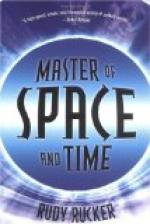IX
THE PIONEER ATLANTIC CABLE
Making the Cable—The
First Attempt at Laying—Another Effort
Checked by Storm—The
Cable Laid at Last—Messages Cross the
Ocean—The Cable
Fails—Professor Thomson’s Inventions
and
Discoveries—Their
Part in Designing and Constructing an Improved
Cable and Apparatus.
Field and his business associates were extremely anxious that the cable be laid with all possible speed, and little time was allowed the engineers and electricians for experimentation. The work of building the cable was begun early in 1857 by two English firms. It consisted of seven copper wires covered with gutta-percha and wound with tarred hemp. Over this were wound heavy iron wires to give protection and added strength. The whole weighed about a ton to the mile, and was both strong and flexible. The distance from the west coast of Ireland to Newfoundland being 1,640 nautical miles, it was decided to supply 2,500 miles of cable, an extra length being, of course, necessary to allow for the inequalities at the bottom of the sea, and the possibility of accident.
The British and American governments had already provided subsidies, and they now supplied war-ships for use in the work of laying the cable. The Agamemnon, one of the largest of England’s war-ships, and the Niagara, giant of the United States Navy, were to do the actual work of cable-laying, the cable being divided between them. They were accompanied by the United States frigate Susquehanna and the British war-ships Leopard and Cyclops. In August of 1857 the fleet assembled on the Irish coast for the start, and the American sailors landed the end of the cable amid great ceremony.
The work of cable-laying was begun by the Niagara, which steamed slowly away, accompanied by the fleet. The great cable payed out smoothly as the Irish coast was left behind and the frigate increased her speed. The submarine hill with its dangerous slopes was safely passed, and it was felt that the greatest danger was past. The paying-out machinery seemed to be working perfectly. Telegraphic communication was constantly maintained with the shore end. For six days all went well and nearly four hundred miles of cable had been laid.
With the cable dropping to the bottom two miles down it was found that it was flowing out at the rate of six miles an hour while the Niagara was steaming but four. It was evident that the cable was being wasted, and to prevent its running out too fast at this great depth the brake controlling the flow of the cable was tightened. The stern of the vessel rising suddenly on a wave, the strain proved too great and the cable parted and was lost. Instant grief swept over the ship and squadron, for the heart of every one was in the great enterprise. It was felt that it would be useless to attempt to grapple the cable at this great depth, and there seemed nothing to do but abandon it and return.




